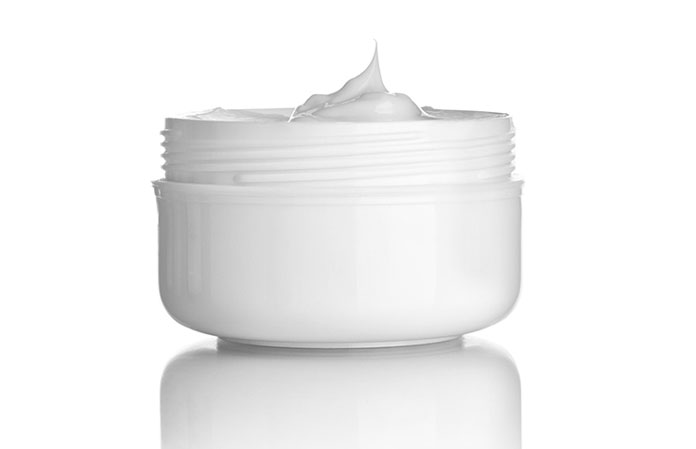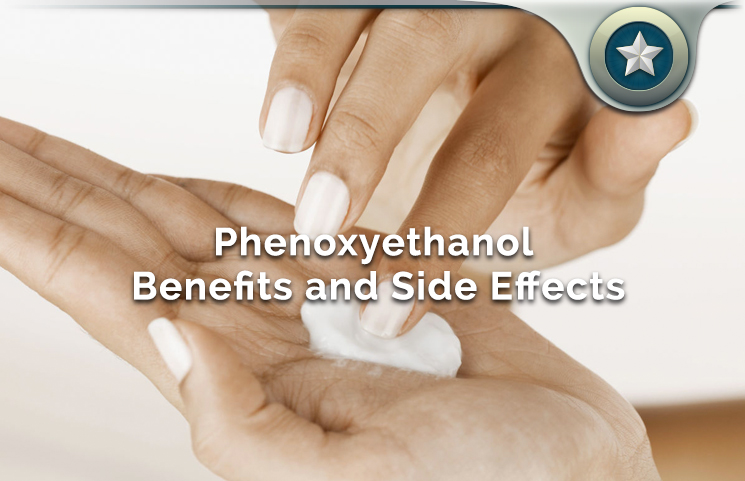What is Phenoxyethanol?
Chemically known as ethylene glycol phenyl ether or ethylene glycol monophenyl ether, Phenoxyethanol is often derived from natural sources and it is a popular preservative and anti-bacterial chemical used by many so called natural organic skin care brands. The chemical is also used in many bug repellants and vaccines.
The substance itself is a colorless liquid that is oily in nature, and it is mostly found in green tea and chicory. However, Phenoxyethanol is also manufactured artificially in a laboratory for use in cosmetic and pharmaceutical products.
The chemical is manufactured in a complex process where phenol is treated with ethylene oxide. Phenol is a mildly acidic white crystalline solid that can be either obtained from natural or artificial chemical sources. Ethylene oxide, also known as carbolic acid is a colorless liquid or gas that is considered carcinogenic.
When combined during Phenoxyethanol manufacture, the two chemicals form a safe, non-toxic synthetic preservative. Manufacturers prefer this artificial form because it is more potent and contains fewer impurities.
Phenoxyethanol can be broken into phenyl, ethylene, glycol and ether. The chemical is known by a host of other names including Rose ether, Phenoxytol, Phenoxethol, Phenyle cellosolve, and Ethyle glycol monophenyl ether.
While testing the chemical for use in dermatological products, Phenoxyethanol was found to have fixative properties that lock the fragrances in soaps and perfumes to linger for longer after application. This is in addition to its preservative properties.
Benefits of Phenoxyethanol
Phenoxyethanol emerged as a major chemical preservative after research reports highlighted the dangers of using paraben preservatives. Many manufacturers found that not only was Phenoxyethanol a safe substitute to parabens, it was less expensive and easier to obtain.
This organic chemical can kill bacteria present in cosmetic formulations and it is a more suitable biological buffer than sodium azide. This is because the level of toxicity of phenoxyethanol is less significant than that of sodium azide.
It works as a stabilizer. When making perfumes, different ingredients are mixed to create a unique scent that will last for a long time. However, in some cases, prolonged use or storage can alter the product, letting the scent escape. To prevent this, stabilizers are added to the solution and phenoxyethanol can do this job.
Phenoxyethanol is also a preferred preservative for many manufacturers despite the existence of a natural alternative because it prolongs the shelf life of moisturizers longer than these natural alternatives once the jar is popped open.
Most naturally preserved products have a shorter shelf life once opened and exposed to oxygen, usually 3-6 months, whereas products preserved using Phenoxyethanol have longer shelf lives once opened.
What’s more, Phenoxyethanol does not react with air, light or other ingredients. This kind of stability makes it an especially effective preservative. The chemical is included in the Handbook of Green Chemicals and is “Whole Foods Premium Body Care” approved.
Their standards, which were developed by a team of scientists, are some of the strictest available. If Phenoxyethanol gets a thumbs up from these two credible sources, there is no reason to distrust it.
Side Effects of Phenoxyethanol
According to the Journal of Industrial Hygiene and Toxicology, Phenoxyethanol can damage the brain cells and central nervous system when used in large quantities. Another study published in the Journal of the American College of Toxicology in 1990 indicated that Phenoxyethanol also acts as an endocrine disruptor that caused damage to the bladder and caused acute pulmonary edema in animals.
Other studies carried out in the Early 1980s also suggest that Phenoxyethanol can cause DNA mutations resulting in cancer; however, these tests were only carried out in animals.
Phenoxyethanol has been shown to be an irritant to the human skin and eyes. Some other possible side effects of using products with this organic chemical include allergic reactions, inflammation in the lungs and eyes, severe skin reaction in people dealing with Eczema and dermatitis.
The chemical is classified as an irritant in the European Union and its use is restricted in Japan. Before using any product with Phenoxyethanol, consult your dermatologist to find out whether it may exacerbate any skin problems you already have.
Regardless of the studies, Phenoxyethanol is deemed safe for use in cosmetics in the US and the UK as long as its concentrations are kept below 1 percent. This means that you will only be exposed to about one teaspoon of Phenoxyethanol after using a 200 ml bottle of shampoo containing the preservative.

Top Phenoxyethanol Products
Phenoxyethanol is mainly found in pharmaceutical and dermatological products including sunscreens, perfumes, shampoos, creams and ointments. It is also present in many bactericides, fabric conditioners, inks, dyes, insect relents, resins, vaccines and spermicidal jellies. Other personal care products include makeup such as mascara, eye shadows, foundation and moisturizers.
1. Seventh Generation Thick & Strong Free and Clear Baby Wipes Refill Pack, 384 Count
Seventh Generation is one of the nation’s leading natural brands of household and personal care products and these baby wipes are free of alcohol, dyes, parabens, synthetic fragrances and phthalates, with Phenoxyethanol being the only preservative
2. Alba Botanica Very Emollient Fragrance Free SPF 30 Mineral Sunscreen 4 oz
This is a lightweight, easy to apply mineral sunscreen that will use a broad spectrum reflective barrier to protect your skin. It is packed with potent botanical ingredients formulated to nourish the individualized needs of your skin and hair.
3. IsoSensuals CURVE | Butt Enhancement Cream
This cream has been proven to enlarge, firm and lift your buttocks so that you can feel more confident without having to undergo risky surgeries or expensive implants. It is made with all natural ingredients including deionized water Voluplus, Sweet Almond Oil, Grapeseed Oil, Beeswax Vegetable Wax, Coconut Oil, Soy Lecithin, Glyceryl Stearate, Aloe Barbadensis Leaf Juice, Vitamin E, Potassium Sorbate, Phenoxyethanol and has a Fresh Cucumber Scent.
4. Phenoxyethanol Preservative Liquid – 500g
This is a 90 percent Phenoxyethanol Preservative Liquid you can purchase for use to preserve your own beauty products.
5. American Crew Light Hold Texture Lotion 8.4 ounces
Just a dime sized amount of this Phenoxyethanol preserved product will do the job. It has a pleasant smell, and it is persistent without intruding.
Phenoxyethanol Final Words
Preservatives such as Phenoxyethanol are necessary to give beauty products a long shelf life. For many people, the question is whether this elongated product life is worth the potential health risk. However, it has been demonstrated that this is one of the safest preservatives available.
You however, need to be skeptical about its safety due to the European Commission and the FDA’s concerns about oral exposure to phenoxyethanol when selecting products to be applied to the lips and around the mouth.









